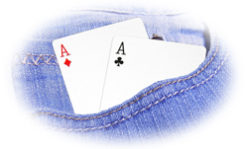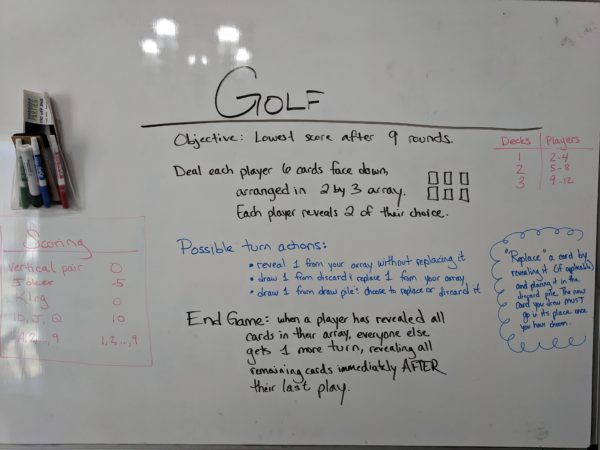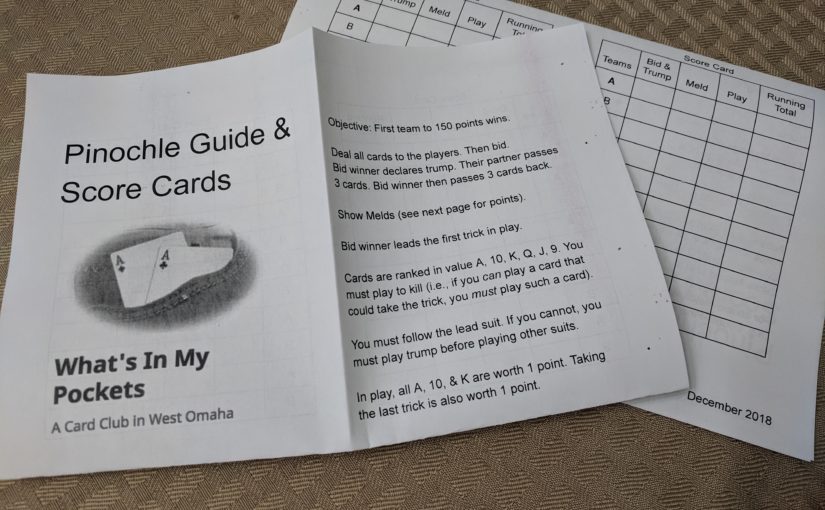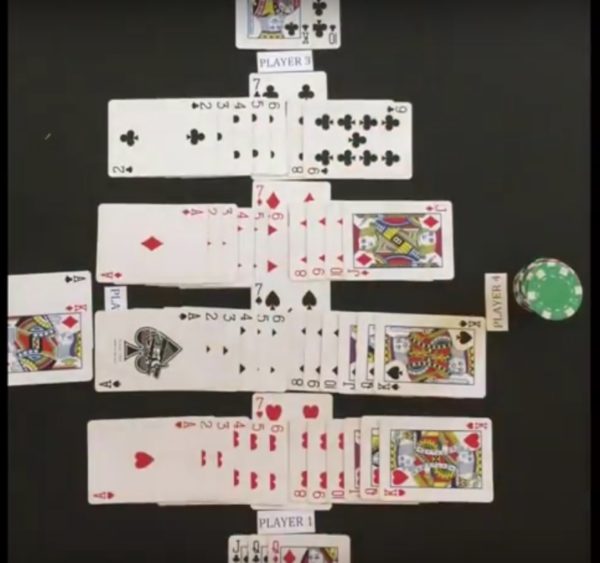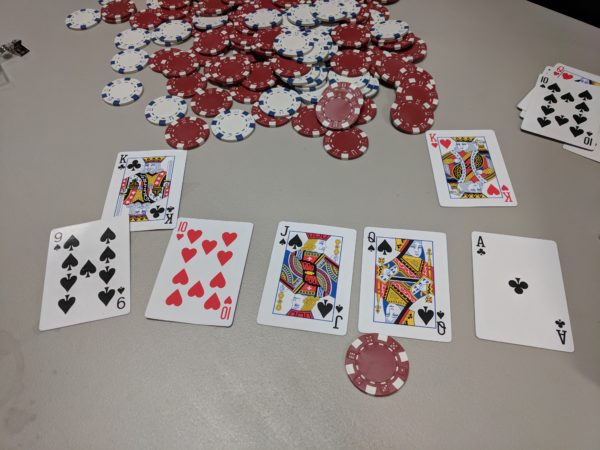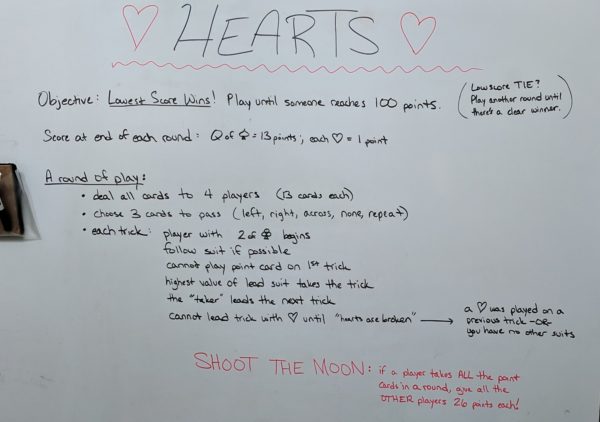Deck
Use a standard 52 deck without jokers. For 2-3 players use 1 deck; 4-7 players use 2 decks; 8-11 players use 3 decks.
The values of the cards are Aces=1, 2-10 at face value, Kings wild (may be used in any position), and the Queens & Jacks are garbage with no value. These values correspond to the position they will take on the table in front of each player. As play continues, the next-highest value card will become garbage for any player who completed their previous round.
Objective
Be the first player to complete 10 rounds, making the entire deck garbage to them. To complete a round, replace all face-down cards with a face-up card of the correct value for its position.
Concept
In the first round of this game, the Queens and Jacks are “garbage” as in unplayable. As you finish each round, some players will have more unplayable, turn-ending cards, increasing the “garbage” and making success more difficult.
Deal
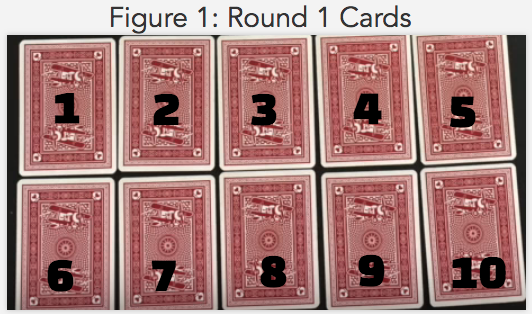 For the first round, every player receives 10 cards face-down. Arrange the cards into an array, so all players know the card positions from 1 to 10.
For the first round, every player receives 10 cards face-down. Arrange the cards into an array, so all players know the card positions from 1 to 10.
Depending on your playing space, or the fewer cards of later rounds, all players may agree on a different arrangement.
After dealing the 10 cards to each player, place the remaining cards in a draw pile, and turn up 1 card from the top to seed the discard pile.
Play
First player is dealer’s left. To begin a turn, the player may draw the top card from either the discard or draw pile. If the card’s value corresponds to a position that still contains a face-down card, the player replaces the face-down card with the drawn card. The replaced card is now playable in the same way. When the player is stuck holding “garbage” or an unplayable card, it must be discarded, ending that player’s turn.
A King is wild and may be played in any position. A King is the only face-up card that may be replaced by the correct-value card for its position.
Once a player has replaced all of their face-down cards with face-up cards of the correct values (or wild Kings), every other player gets one more turn before the round is over.
Any player who completes the replacement of all their cards for the round is dealt 1 fewer cards in the next round. For example, after round 1, any players who turned up all 10 cards will only be dealt 9 cards in the next round, and their position values are 1-9 instead of 1-10. In that case, the 10 also becomes unplayable garbage.
Winning
The first player to have no cards left and get up from this “garbage” game is the winner. If the players agree to end the game early, the player who would have the fewest cards dealt at the beginning of the next round is the winner.
